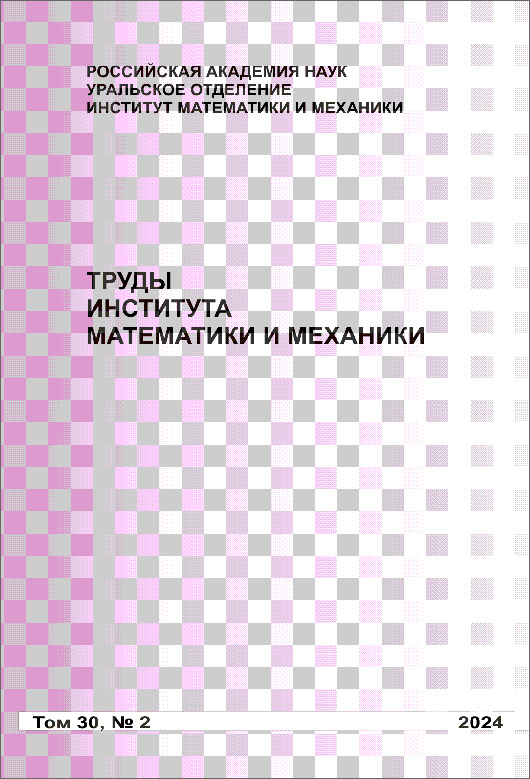|
This article is cited in 1 scientific paper (total in 1 paper)
Extremal interpolation on the semiaxis with the smallest norm of the third derivative
S. I. Novikov, V. T. Shevaldin
Institute of Mathematics and Mechanics, Ural Branch of the Russian Academy of Sciences, Ekaterinburg
Abstract:
The following problem is considered. For a class of interpolated sequences $y=\{y_{k}\}_{k=-\infty}^{+\infty}$ of real numbers such that their third-order divided difference constructed for arbitrary knots $\{x_{k}\}_{k=-\infty}^{+\infty}$ are bounded in absolute value by a fixed positive number, it is required to find a function $f$ having the third derivative almost everywhere and such that $f(x_{k})=y_{k}\ (k\in\mathbb{Z})$ and the third derivative has the smallest $L_{\infty}$-norm. The problem is solved on the positive semiaxis $\mathbb{R}_{+}=(0,+\infty)$ for geometric grids in which the sequence of steps $h_{k}=x_{k+1}-x_{k}$ $(k\in\mathbb{Z})$ is a geometric progression with ratio $p$ $(p>1)$; i.e., $h_{k+1}/h_{k}=p$. In the case of a uniform grid $x_{k}=kh\ (h>0,k\in\mathbb{Z})$ on the whole axis $\mathbb{R}$ (i.e., for $p=1$), this problem was solved by Yu. N. Subbotin in 1965 and is known as the Yanenko–Stechkin–Subbotin problem of extremal function interpolation.
Keywords:
interpolation, divided difference, splines, difference equation.
Received: 09.09.2020
Revised: 23.10.2020
Accepted: 02.11.2020
Citation:
S. I. Novikov, V. T. Shevaldin, “Extremal interpolation on the semiaxis with the smallest norm of the third derivative”, Trudy Inst. Mat. i Mekh. UrO RAN, 26, no. 4, 2020, 210–223
Linking options:
https://www.mathnet.ru/eng/timm1776 https://www.mathnet.ru/eng/timm/v26/i4/p210
|

| Statistics & downloads: |
| Abstract page: | 101 | | Full-text PDF : | 36 | | References: | 28 | | First page: | 1 |
|




 Contact us:
Contact us: Terms of Use
Terms of Use
 Registration to the website
Registration to the website Logotypes
Logotypes









 Citation in format
Citation in format 
